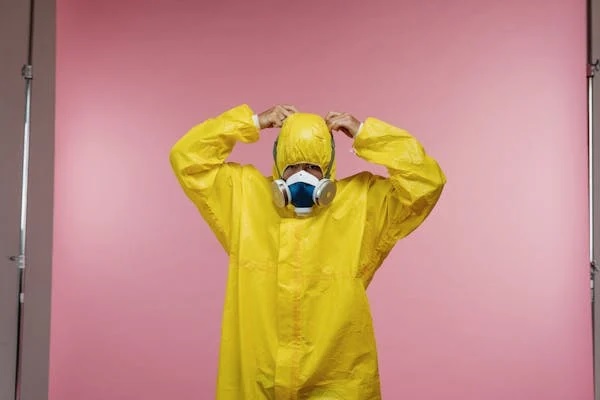You might come into contact with a variety of biohazards in a house. The hazards of exposure may in certain circumstances be so great as to cause a major health emergency or even death. Here, you can examine the types of objects and chemicals that can be considered biohazards as well as appropriate handling procedures.
People working in the cleaning industry frequently come into biohazard scenarios and need knowledge to keep themselves safe and avoid illness. To begin, let’s clarify what constitutes a biohazard.
What does a biohazard actually mean?
Biohazards are biological materials or substances that can endanger the health of any kind of living thing, including humans and animals. They might arrive in a variety of forms, including body fluids, feces, animal problems, laboratory waste, the growth of mold, fungus, and more.
Often, what makes a chemical potentially dangerous is not the thing itself. For example, blood may include blood borne pathogens, such as bacteria and viruses, which can spread serious illnesses. It’s also true that some biohazards aren’t seen to be as harmful. Sweat, pee, and mucous may be examples of this.
An example of cocci, which are spherical and rod-shaped microorganisms. Shigella, Salmonella, Legionella, Mycobacterium, Klebsiella, and Escherichia coli are among the rod-shaped bacteria. Streptococci and Staphylococci are examples of spherical bacteria.
While certain biohazards in the house are relatively uncommon, some may be more prevalent than you may imagine. It is critical to be able to recognize the many categories of biohazards.
The CDC has established four distinct bio safety levels based on the potential degree of harm that each might inflict. These levels are meant to aid in assessing the degree of risk and how it should be managed.
First Level
There is little risk to human life from these biohazards.
In healthy individuals, these agents are thought to typically not cause illness. Although there is no need for specific confinement, safety measures by expert bio hazard cleaning in dover, including donning gloves as well as a face mask, are advised.
Level Two
These are the kinds of biohazards that are somewhat dangerous to human life.
Applying this to biohazards that cannot be inhaled is appropriate. Although they shouldn’t be dangerous to humans in good health, they might spread illness if there is either by eating anything or by direct touch with damaged skin.
Level Three
These are potentially airborne, high-risk diseases.
Serious and even fatal diseases like TB can be brought on by these microorganisms. Even in the absence of physical touch, they can spread illnesses.
Level Four
Certain infectious diseases have no recognized vaccine, remedy, or cure.
Due to their high death rate and potential for recent discovery or lack of investigation, these infections are not well known by scientists. The utmost vigilance is required due to these diseases, which includes the employing of full-body pressurized suits with separate air supply and cleaning procedures.
Regular cleaning won’t be enough to get rid of the germs when there’s a chance of exposure to biohazards. Therefore, the requirement for risky substance clearing.
Where may someone be exposed to biohazards?
People’s first thoughts when they hear the word “biohazard” are usually of hazmat suits (https://www.osha.com/blog/hazmat-suit-levels) around some sort of laboratory. TV shows and movies have greatly contributed to the inspiration of such concepts. Nevertheless, biohazards might still exist in your house and place of employment.
A little leak might result in rat infestations that lower air quality or the formation of hazardous black mold. Hazardous chemicals that may leak unexpectedly or vagrants who use illegal substances and leave used needles behind are two potential issues with industrial properties.
Not to mention somewhere there may be a medical emergency, an accident, or a crime. There exist several scenarios that might transpire, leading to the discharge of various biohazards at a place and needing to be properly cleaned up.
Why would a house be considered a biohazard?
Severe bleeding
There are situations that might happen in the house that expose people to human body fluids due to heavy bleeding. Spilling of the blood, saliva, feces, and other body fluids is a common consequence of situations such as slashed suicides or violent crimes like murder or assault.
There is a chance of blood borne infections whenever there is blood. These microbes have the potential to spread illnesses to people.
Even if the crime or accident site is abandoned for an extended amount of time, it might cause dangerous bacteria to proliferate.
Medical isolation
As the pandemic has shown, some illnesses can be extremely infectious and airborne, although the patients are restricted to their homes. Your entire house will become a biohazard, even if the intruder is limited to a few rooms.
So long as they’re sick and contagious, it’s crucial to attempt to keep them away from the rest of the house.

